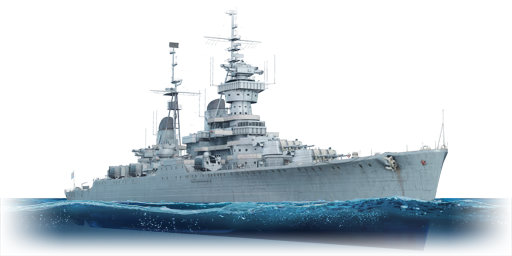The Sverdlov was the lead ship of the Sverdlov-class light cruisers, the last conventional gun cruisers built for the Soviet Navy. They were modified and enlarged versions of the Project 68-K Chapayev-class light cruisers. Sverdlov was laid down on 15th October 1949 and commissioned on 15th May 1952. Unlike the Chapayev class, the Sverdlov was built with two quintuple 533 mm torpedo launchers on each side of the hull, with two spare torpedoes for each launcher. The anti-aircraft armament was also strengthened as Sverdlov gained two additional pairs of 100 mm twin turrets as well as two 37 mm twin V-11 autocannon turrets. Despite their size and displacement, the maximum speed was an impressive 32.5 kn (60.2 km/h). Sverdlov spent most of her career performing ceremonial visits to allies and non-allied ports. She also underwent several refits giving her air and surface search and track radars as well as ECM equipment that changed over the years. She was decommissioned after her first refit in 1966, then reactivated again in 1972. She was decommissioned for second time in 1977 following a refit and placed into long term storage in 1978 where she remained until 30th May 1989 when she was decommissioned. She was towed to Kronshtadt in 1990 and sold for scrap the following year, she was broken up in 1993 in India. One of her sisters, Mikhail Kutuzov, is the only surviving ship of the class, preserved as a museum ship in Novorossiysk.
Sverdlov was introduced in Update 1.97 "Viking Fury". Her armour protection is a significant improvement over the previous Project 26 class, which the Project 68 and 68-K design comes from, as well as having guns with higher rate of fire, although at cost of penetration characteristic. Her anti-aircraft protection suite was expanded with thirty-two 37 mm automatic V-11 cannon barrels as well as twelve 100 mm dual purpose guns. Just like Chapayev, her magazines are close to waterline being more vulnerable to being hit, leading to fatal explosion.














